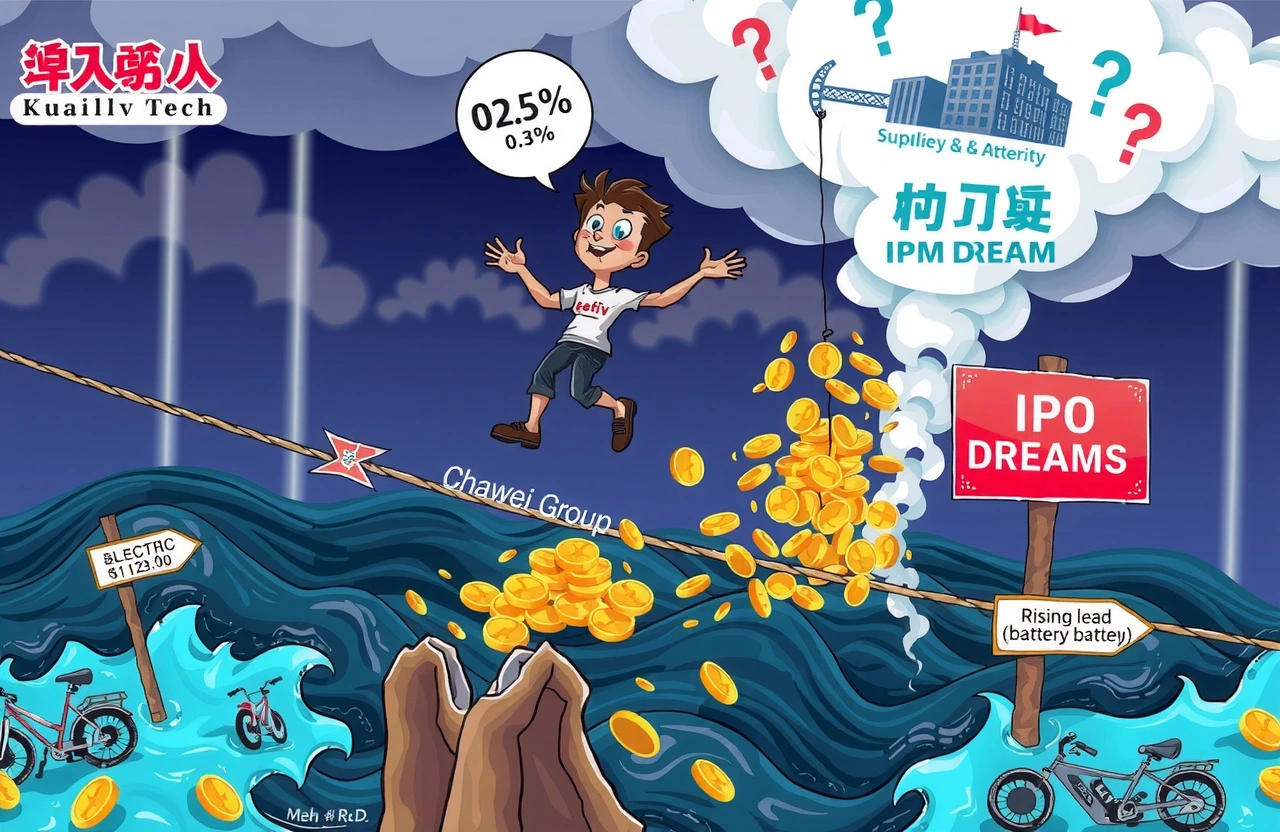The Thin Margin Reality Behind Battery Distribution
Amid Hong Kong’s bustling IPO market, Kuailv Technology presents a paradox: 16.3 billion yuan ($2.2B) annual revenue with profitability so fragile that selling 100 yuan of batteries yields just 0.5 yuan in net profit. This distributor for battery giant Chaowei Group has built its business on razor-thin margins while positioning itself as a “short-distance green mobility technology service provider.” Yet beneath the eco-friendly branding lies a fundamental dependency that threatens its IPO ambitions and long-term viability.
Unmasking the Business Model
Kuailv’s core operation involves distributing lead-acid batteries primarily for electric bikes and tricycles used by China’s massive food delivery workforce. Despite technological claims, its financials reveal a classic middleman operation with minimal value addition.
The Distributor Reality
– Product sourcing: 99.2% of 2024 procurement came from Chaowei Group
– Revenue composition: 70.6% from Chaowei’s Jinchaowei brand, 28.5% from self-branded batteries still manufactured by Chaowei
– Cost structure: 97.3% of expenses tied directly to inventory costs
This distributor model creates inherent margin compression. With no manufacturing control and limited pricing power, Kuailv operates on survival-level profitability despite handling billions in revenue.
Financials: Growth Without Prosperity
Kuailv’s revenue trajectory shows surface-level strength but conceals alarming fragility in its profit structure.
The Margin Crisis
– 2022-2024 gross margins: 3.5% to 4.1%
– Net margins: 0.5% (2022), 0.2% (2023), 0.5% (2024)
– Profit comparison: 2024 net profit of 8.26 million yuan ($1.1M) on 16.3B yuan revenue
These razor-thin margins leave minimal buffer against market shocks. When lead prices rose 13% from 2022-2024, Kuailv couldn’t fully pass costs to customers, demonstrating its weak position in the value chain.
The Chaowei Dependency Trap
Kuailv’s entire existence is intertwined with battery manufacturer Chaowei Group, creating both opportunity and existential risk.
Foundational Ties
Founder Wu Yingjie (武英杰) built his career at Chaowei before launching Kuailv in 2014 with Chaowei founder Zhou Mingming (周明明), who initially held 99% ownership. Even after Zhou’s 2019 exit, the relationship remained codependent through an exclusive distribution agreement for Chaowei’s Jinchaowei batteries running through 2034.
The Supplier Stranglehold
– Procurement concentration: 99.2% of 2024 purchases from Chaowei
– Contractual binding: Exclusive distribution rights create both security and vulnerability
– Market reality: Lead-acid battery industry’s low differentiation limits alternative suppliers
This dependency creates razor-thin margins that Chaowei itself experiences, with the manufacturer reporting just 6.9% gross margins in 2024.
Questionable Path to Independence
Kuailv’s proposed solution to margin pressure—building its own battery factory—introduces new risks while failing to address core weaknesses.
The Factory Fantasy
The planned 50-acre facility targeting 500,000 annual battery units faces multiple hurdles:
– Direct competition with primary supplier Chaowei
– Lack of manufacturing experience and scale advantages
– Capital intensity in a low-margin industry
Innovation Deficit
Kuailv’s minimal R&D investment reveals its technological limitations:
– 2022-2024 total R&D spending: 150,000 yuan ($20,600)
– R&D/revenue ratio: 0.036%
– Technical staff: 16 out of 239 employees (6.7%)
Without meaningful innovation, transitioning from distributor to manufacturer appears financially and operationally implausible.
IPO Prospects in a Margin-Squeezed Market
Investors face critical questions when evaluating Kuailv’s public offering in Hong Kong’s competitive IPO landscape.
Valuation Challenges
– Comparables: Chaowei Group trades at 14B yuan market cap on 50B yuan revenue
– Profitability premium: Kuailv’s razor-thin margins demand significant discount
– Growth constraints: Limited expansion avenues beyond core battery distribution
Structural Industry Headwinds
The lead-acid battery market presents inherent challenges:
– Commoditized products with minimal differentiation
– Price sensitivity among regional distributors
– Raw material volatility (lead prices up 13% since 2022)
– Lithium battery disruption with Kuailv generating <1% revenue from this segment
Survival Strategies for Margin-Compressed Businesses
For distributors operating on razor-thin margins, Kuailv’s predicament offers universal lessons:
– Vertical integration requires substantial capital and technical capability
– Customer diversification reduces supplier leverage
– Value-added services (maintenance, financing, data analytics) improve stickiness
– Technological partnerships can bridge R&D gaps more efficiently than in-house development
Kuailv’s journey underscores that revenue scale without pricing power creates fragile businesses. As it approaches its Hong Kong listing, the company must demonstrate credible pathways beyond its current razor-thin margins before investors can confidently back its independence bid. For market watchers, this IPO serves as a case study in distributor limitations and the harsh realities of battery industry economics.



